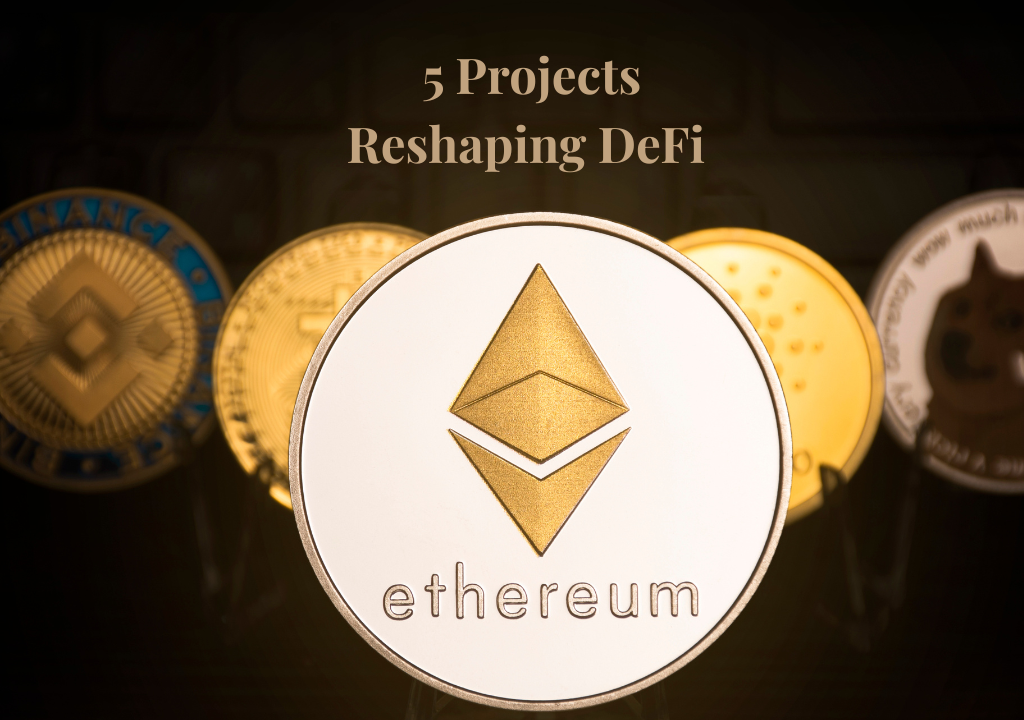DeFi began life on Ethereum, and it continues to flourish on the Ethereum network as well as throughout the family of EVM L2s that have formed around it. While decentralized finance is now a broad tent that encompasses the entire omnichain landscape, it remains synonymous with Ethereum, where it all began in the DeFi summer of 2020.While the crypto industry has evolved significantly since then, the core principles upon which DeFi was founded remain true today: universal access, removal of intermediaries, modularity, and freedom to experiment with novel financial models and token economies to create new money markets and financial opportunities.If you thought that DeFi innovation on Ethereum had stagnated, you haven’t been looking closely enough. The ecosystem that gave us Uniswap, yield farming, and onchain lending is still innovating in spades. As a closer examination of just five projects centered around Ethereum shows, DeFi in 2025 is very much alive and kicking in EVM land.
Resolv
Does Ethereum really need another stablecoin? When it’s fully backed by ETH and adheres closely to the US dollar, the answer’s yes. Designed to serve as a delta-neutral stablecoin, USR generates crypto-native yield for its holders. Developed by Resolv and fully backed by ETH, it’s over-collateralized, with RLP (Resolv Liquidity Pool) serving as a liquid insurance pool that ensures there’s plenty in reserve – even if the price of ETH should drop.
Anyone can mint USR and use it for normal DeFi purposes: trading, liquidity, and borrowing against. It also offers yield, but to earn this, holders need to stake their USR to generate stUSR. There’s an industry-wide push towards yield-bearing stablecoins at the moment, which is inherently attractive to users who can hold a non-volatile asset and still earn an APR to grow their stack. USR is at the vanguard of this trend, and with TVL of over $400M, it’s a model that’s found clear product-market fit.
Silo Finance
DeFi lending is almost as old as DeFi itself and remains a versatile primitive that serves as the bedrock for much of the other activity that takes place onchain, from trading to liquidity provision. But in 2025, DeFi lending is a much slicker beast than anything delivered by the first wave of protocols – and Silo Finance is proof.
While the core service of permissionless lending and borrowing, through overcollateralization of crypto assets, remains intact, underneath the hood, Silo does things differently. It’s responsible for pioneering isolated lending markets which mitigate risk, ensuring what happens in one pool stays in one pool. Silo supports lending for any asset pair, allowing the long tail of crypto assets to be safely borrowed against.With the launch of Silo V2 last year, a bunch of powerful new features were introduced including programmable lending markets. These protect users from system-wide insolvency such as hacks, and are complemented by Silo Vaults which optimize liquidity for DeFi users. Today, Silo has hundreds of millions of dollars in TVL and is serving tirelessly as the backbone of much of the onchain activity taking place across the Ethereum landscape as well as on Sonic.
M^0
Its name begs a lot of questions, not least in terms of pronunciation, but if you can see past the curious nomenclature, M^0 is a very interesting project. It’s also in the stablecoin business, but unlike Resolv, its business is middleware. Basically, M^0 provides the tooling for institutions to create their own stables. Welcome to the dawn of Stablecoin-as-a-Service.
It’s an opportunity for enterprises to create a whitelabel stablecoin, complete with their own yield sources, that can be deployed rapidly without needing to get bogged down in coding and auditing. Thanks to its shared liquidity model, M^0 lets businesses get up and running instantly while retaining full control over the issuance of their branded stablecoin. It’s a model that’s already showing promise, with close to $200M in TVL, much of it courtesy of institutions depositing short-term T-bills.
Swell
Liquid staking underpins DeFi on Ethereum, forming a versatile primitive that fuels much of the subsequent activity across the EVM chains. Swell is at the center of this movement, with a mission to make restaking accessible for everyone so they can earn rewards while supporting the crypto-economic security of dapps and protocols.
Having now launched its own restaking chain, Swellchain, powered by Proof of Restake, Swell is onboarding dapps in their droves, providing ample opportunities for earning juicy yield. Built as an Optimism Superchain, Swellchain remains deeply connected to all things Ethereum, and supports restaking from the likes of Ether.fi and Renzo.
Index Coop
Index Coop aims to give Ethereum users access to high returns without ramping up the risk in the process. It’s developed three primary index, leverage, and yield products to facilitate this. DPI provides exposure to a basket of leading DeFi protocols; ETH2x is a simple leveraged ETH token; and hyETH provides access to high ETH yields.
Step inside Index Coop’s Leverage Suite, and you can start getting to grips with its automated onchain trading solution. By making use of DeFi lending platforms such as Aave, Leverage Suite allows users to take out leveraged positions without liquidation risk or having to constantly rebalance. It’s a neat way of helping DeFi users explore more advanced trading strategies without getting out of their comfort zone.
Disclaimer: This article is provided for informational purposes only. It is not offered or intended to be used as legal, tax, investment, financial, or other advice.

